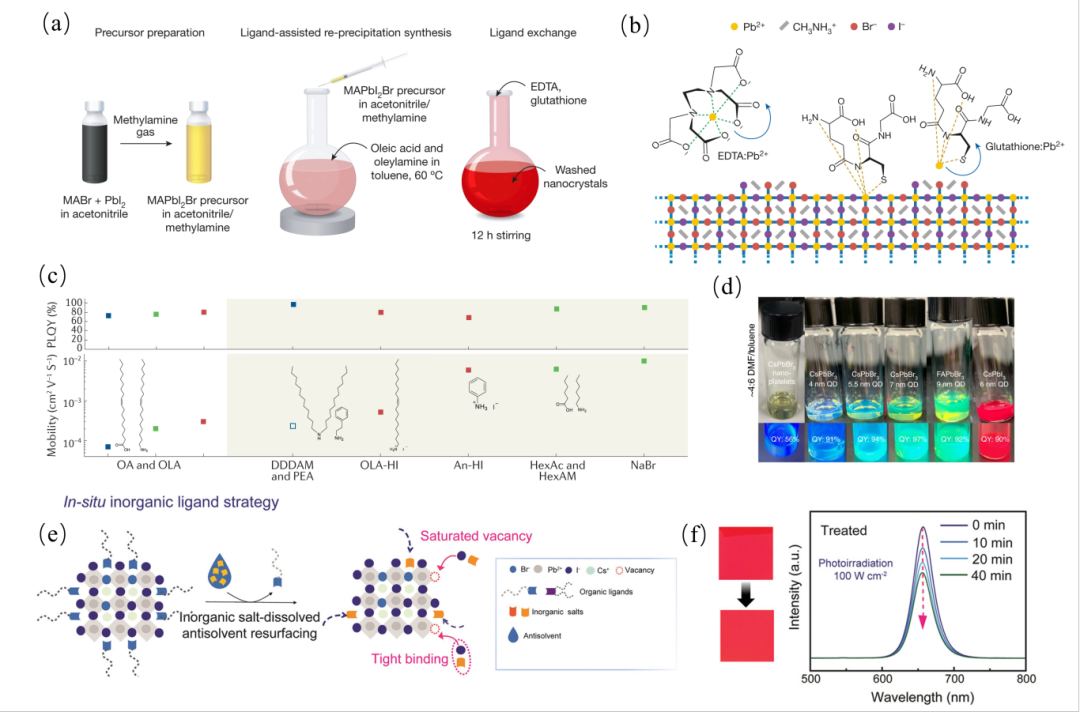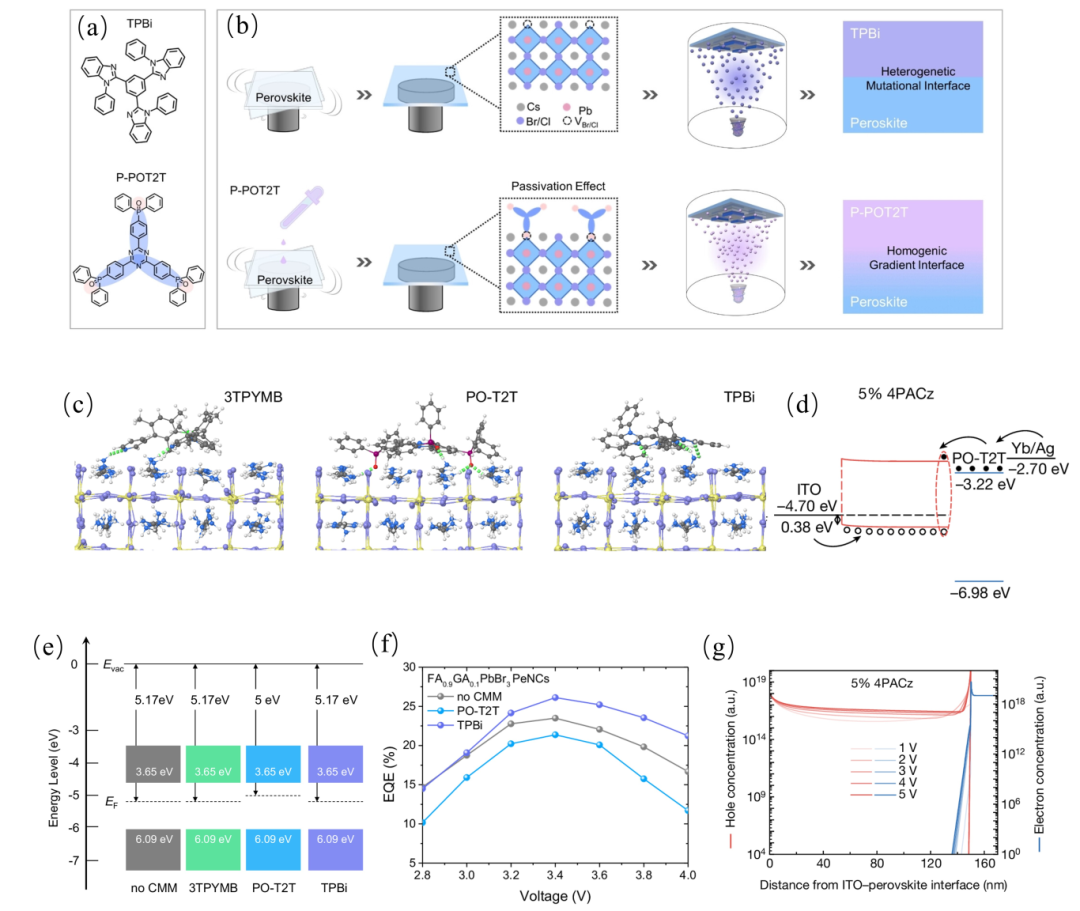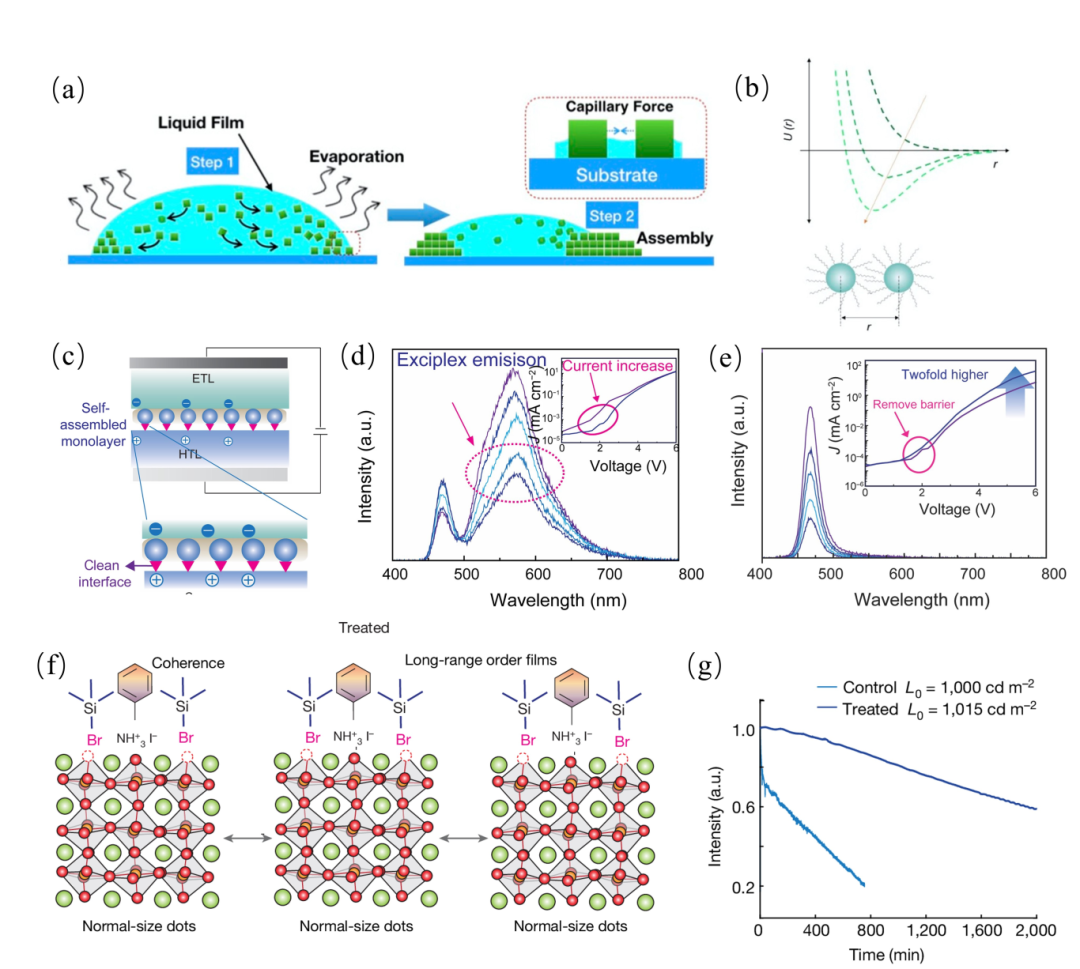10
2025
-
04
Journal of Luminescence - Invited Review | High-efficiency Perovskite Quantum Dot Light-Emitting Diodes: Challenges and Optimization
Author:
Introduction
Perovskite quantum dot light-emitting diodes (Pe-QLEDs), as an emerging display technology, have shown great application potential in display and lighting fields due to their excellent color purity, flexible adjustable emission wavelength, narrow full width at half maximum (FWHM), and high photoluminescence quantum efficiency. With continuous research, Pe-QLEDs have made significant breakthroughs in performance, but they still face many challenges, such as defects and ion migration, which affect their long-term stability and efficiency. Therefore, how to improve the performance of Pe-QLEDs through effective optimization strategies is an important direction of current research.
Recently, the research groups of Liangsheng Liao and Yakun Wang at the Institute of Functional Nano and Soft Matter, Soochow University ,在权威期刊 Journal of Luminescence published an invited review paper entitled High-efficiency Perovskite Quantum Dot Light-Emitting Diodes: Challenges and Optimization The paper was Mengjiao Li, a master's student as the first author, comprehensively and systematically discussed the synthesis, challenges and optimization strategies of perovskite quantum dots (PQDs), especially made specific explanations on the optimization methods of ligand engineering, interface passivation and self-assembly strategies, providing new ideas and methods for Pe-LEDs research, and finally summarized and prospected the existing problems and development directions of Pe-LEDs.
Introduction
The typical structure of PQDs follows the ABX 3 configuration, where A usually refers to Cs + 、CH 3 NH 3+ (MA + ) or CH(NH 2)2+ (FA + ); B represents divalent lead ions (Pb 2+ ); X represents halide ions (Cl - 、Br - or I - ), this flexible structure gives PQDs unique electronic and optical properties. As an alternative to traditional quantum dots, PQDs have extremely low formation energy and defect tolerance. By adjusting their crystal structure, composition, and surface ligands, PQDs can exhibit tunable emission characteristics from red to blue, with high color purity and excellent photoluminescence quantum yield, making them one of the most promising materials for commercial televisions and displays. It is particularly noteworthy that quantum dot light-emitting diodes exhibit superior performance in wide color gamut displays, making them the leader in future advanced display technologies.
Hot injection and anion exchange methods, as effective techniques for synthesizing PQDs, can effectively control the Size and morphology of PQDs, but they still face some bottlenecks, especially the defects and ion migration problems produced during the synthesis process. PQDs are prone to various types of defects during synthesis, including point defects and surface defects, which can lead to a decline in optoelectronic performance. For example, deep-level defects may cause non-radiative recombination, thereby reducing the photoluminescence efficiency; surface defects may increase the possibility of ion migration, affecting the long-term stability of the device. Ion migration not only destroys the crystal structure of the quantum dots, but also may form defects at the interface, further affecting the carrier injection and optoelectronic conversion efficiency. To overcome the above problems, researchers have proposed a variety of optimization strategies, from ligand engineering to interface passivation technology and self-assembly strategies, continuously improving the performance and stability of Pe-QLEDs.
Optimization Strategies for Perovskite Quantum Dot Light-Emitting Diodes
(1) Ligand Engineering
In the study of PQDs, ligand engineering has been proven to be an important strategy to improve device performance and stability. By modifying the material surface with suitable ligands, it is possible to effectively reduce the defect density, suppress ion migration, improve carrier mobility, and improve luminous efficiency, as shown in Figure 1. By using ligands such as EDTA and GSH, researchers can reduce uncoordinated Pb 2+ ,reduce defect density, effectively suppress halide segregation and improve band gap stability. In addition, methods such as bipolar surface modification, increasing the π-conjugation length, and increasing the cross-sectional area of the ligand have also been shown to further improve carrier mobility, reduce defect density, and improve radiative recombination efficiency.

Figure 1: (a) Synthesis and ligand treatment steps: dissolving perovskite precursors in acetonitrile and methylamine, synthesizing quantum dots by an improved ligand-assisted reprecipitation method; (b) Molecular interactions between glutathione, EDTA and surface Pb 2+ ; (c) Photoluminescence quantum efficiency and carrier mobility of PQDs with different ligand compositions. (Solid squares represent hole mobility, while hollow squares represent electron mobility, and the color of each point corresponds to the emission color of the corresponding PQD. The shaded area highlights ligands that can replace traditional OA and OAm); (d) Bipolar surface-modified PQDs of different Sizes, shapes, and compositions suspended in DMF/toluene mixture; (e) In situ inorganic ligand strategy using weakly polar antisolvent; (f) Band gap stability of treated metal halide perovskite films under 100 W·cm -2 illumination
(2) Interface Passivation
Existing research shows that defects at the device interface are related to non-radiative recombination, making interface defects one of the important factors affecting the efficiency and stability of Pe-OLEDs. As shown in Figure 2, researchers have introduced new electron transport materials (such as P-POT2T) to form a uniform gradient interface, suppress the existence of uncoordinated Pb2+ surface ions, thereby reducing interface recombination, improving carrier injection, and ultimately improving the stability and efficiency of the device. In addition, a multivalent π-conjugated molecular strategy with a large surface area and multiple binding sites can suppress dynamic disorder on the surface of metal halide perovskites, thus producing near-perfect emitters with minimal non-radiative recombination; using 4PACz as a molecular dopant with strong electron accepting ability not only achieves a transition from n-type to p-type conductivity, but also maintains excellent photoluminescence quantum efficiency.

Figure 2: (a) Molecular structures of TPBi and P-POT 2T; (b) Schematic diagram of the method for obtaining a uniform gradient interface; (c) DFT optimization schematic of the FAPbBr perovskite structure using CMM; (d) Energy level diagram of Pe-LEDs doped with 4PACz; (e) Schematic diagram of the electronic structure of FAPbBr quantum dots; (f) EQE histogram; (g) Doping of 4PACz at different voltages 3 Perovskite structure 3 Schematic diagram of the electronic structure of quantum dots; (f) EQE histogram; (g) Doping of 4PACz at different voltages
(3) Self-assembly strategy
Self-assembly technology, as an efficient "bottom-up" method, promotes the ordered arrangement of PQDs through solvent evaporation or changes in the polarity of the reaction system. As the solvent gradually evaporates, the mutual attraction between quantum dots increases, eventually forming an ordered superlattice structure. This arrangement helps reduce defect density, optimize optoelectronic performance, and improve the long-term stability of the device. By adjusting the surface ligands and arrangement of quantum dots, the current injection and luminous efficiency can be significantly improved. In addition, when the self-assembled layer thickness of quantum dots is controlled at about 5 nm, the adverse mutual influence between the hole transport layer and the electron transport layer can be avoided, thereby reducing the exciton recombination phenomenon.

Figure 3: (a) Schematic diagram of capillary forces related to solvent evaporation; (b) Evolution of the effective interaction potential U from the starting point to the end point at the interparticle separation distance r of nanocrystals during self-assembly; (c) Schematic diagram of the compatibility ligand strategy; (d) EL of single-layer LEDs under different current densities (10 ~ 40 mA·cm (inset shows the reduction of the injection barrier of the single-layer LED); (e) Single-layer LEDs showing Rec.2100 color-accurate blue light emission. (The inset shows the doubled current density and reduced injection barrier); (f) Schematic diagram of long-range order control strategy; (g) Operational stability of LED devices -2 )下,单层LED的EL(插图表示单层LED的注入势垒降低);(e) 单层LED显示Rec.2100颜色精确的蓝光发射。(插图示出了加倍的电流密度和降低的注入势垒);(f)长程有序控制策略示意图;(g) LED器件的操作稳定性
Summary and Outlook
In the application of PQDs devices, achieving efficient and stable light emission faces many challenges, such as defects, ion migration, carrier injection imbalance, and poor long-range order of quantum dot films. In order to solve these problems, researchers have proposed a variety of optimization strategies, such as ligand engineering, interface passivation technology, and self-assembly strategies, and have made significant progress. These methods effectively improve the stability and optoelectronic properties of PQDs, promoting the development of Pe-QLEDs technology.
In addition, Pe-LEDs have great potential in future display technology, especially in applications at wavelengths other than visible light (such as near-infrared and mid-infrared). Although FAPbI QDs and tin-based quantum dots can achieve near-infrared emission, they are limited by band gap limitations, 3 QDs and tin-based quantum dots can achieve near-infrared emission, but limited by band gap limitations, FAPbI 3 can only achieve near-infrared emission of about 800 nm, which cannot meet the needs of longer wavelengths; while tin-based quantum dots can achieve near-infrared emission up to 950 nm, but their surface defects are serious, resulting in low photoluminescence quantum efficiency. To solve this problem, rare earth elements (such as Yb 3+ ) can be doped to achieve near-infrared emission up to 1000 nm and a photoluminescence quantum efficiency of 200%. However, the precipitation problem caused by Yb 3+ restricts its application in near-infrared light emitting diodes.
The improvement of Pe-QLEDs in stability and efficiency will inevitably promote its widespread application in display and lighting technology. It is believed that in the near future, with the continuous expansion of material systems and technological innovation, Pe-QLEDs are expected to achieve efficient light emission in a wider range of wavelengths, opening up new application prospects.
Paper Information
Li Mengjiao, Wang Ye, Wang Yakun, Liao Liangsheng. High-efficiency perovskite quantum dot light-emitting diodes: Challenges and optimization [J]. Journal of Luminescence, 2025, 46(03): 452-461.
DOI: 10.37188/CJL.20240276
https://cjl.lightpublishing.cn/zh/article/doi/10.37188/CJL.20240276/
LATEST NEWS
2025-06-06
Photonic avalanche nanocrystals with >500-order optical nonlinear response
At the forefront of nonlinear optical materials research, photon avalanche (PA), a unique luminescence mechanism occurring in lanthanide-ion-doped systems, exhibits exponential response under continuous laser pumping through an energy positive feedback loop mechanism, thus demonstrating ultra-high-order nonlinear optical behavior far exceeding traditional upconversion processes.
2025-06-05
Ji Xingchen/Su Yikai LPR | 780 nm on-chip integrated high-Q ultra-wideband Fabry-Perot cavity
With the rapid development of applications such as quantum precision measurement, atom manipulation, and narrow linewidth lasers, higher and higher demands are placed on high-performance photonic devices operating in the visible and near-visible wavelength range (especially the 780 nm wavelength corresponding to the rubidium atomic transition).
2025-06-23
Binary optics and metasurface lenses
Bichromatic optics is a subject or an optical technology; the concept of a meta-lens is more inclined to be a device.
2025-06-23
Achromatic diffractive waveguide in AR glasses
AR glasses seem to have developed rapidly in recent years; many believe this is the device most likely to replace mobile phones in the future.

